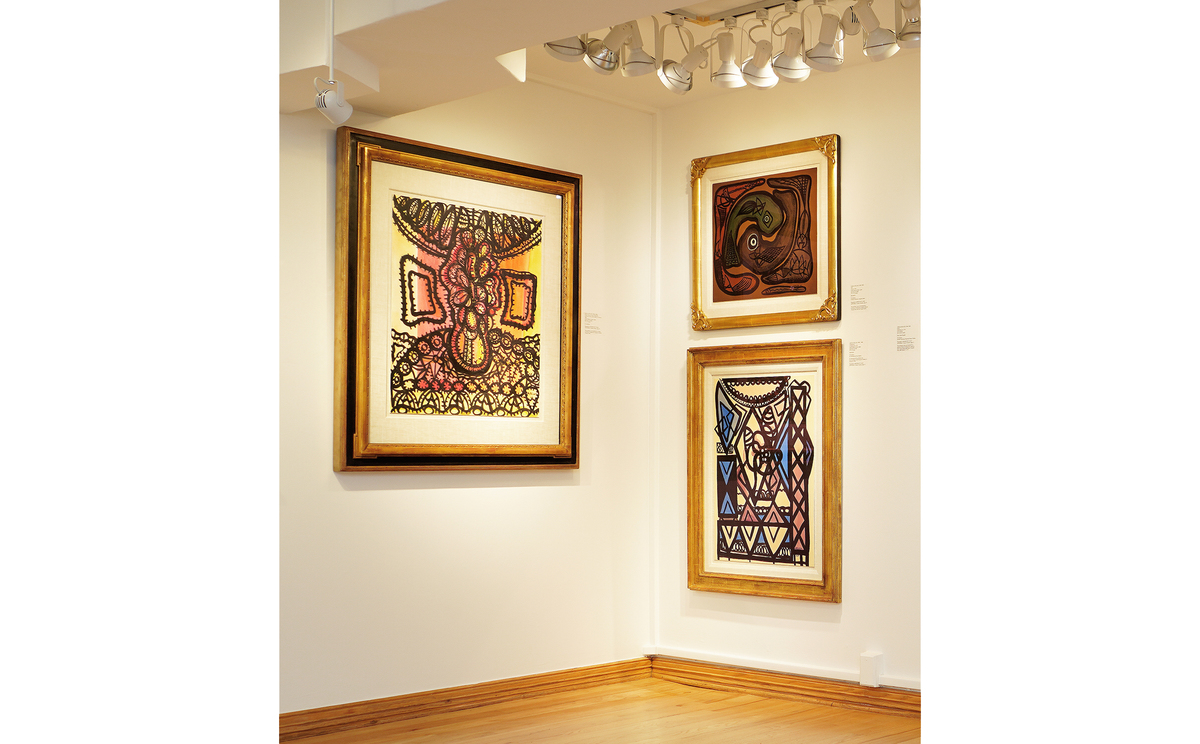| |
 |
FIVE DECADES OF AMELIA PELÁEZ 1920s to the 1960s
Considered a grand master of modern Cuban art, and a seminal figure in 20th century Latin American painting, Amelia Pelaéz is one of the most acclaimed artists of her times.
Her contribution to the avant-garde women’s movement in the arts- internationally speaking- was a palmary achievement.
Just like Frida Kahlo in Mexico and Tarsila do Amaral in Brazil, Amelia -with her strong artistic voice- was able to break through the male dominant avant-garde movement of the era, eventually becoming a pioneer of Modernism in Cuba. An extraordinary exhibition that exalted Amelia’s stardom as one of the leading modern masters of Latin American art was the 1997 traveling show entitled, Tarsila, Frida y Amelia at the Centre Cultural de la Fundación “la Caixa” in Madrid and Barcelona, Spain.
The artist was first trained in and graduated from San Alejandro Academy in Havana under the academic mindset that prevailed in this art school. There, she excelled in painting, drawing, ceramics and muralism.
In 1924, the artist went on to travel to New York where she studied at The Arts Student League. Later on, in 1927, she traveled to Europe, visited Spain, Italy, and lived in Paris until 1934. It was in the City of Light where Amelia absorbed the European avant-garde movements. Matisse, Leger, Picasso, Braque and Gris, among others, shaped her imagery. European trends as Cubism, Fauvism and the Russian Avant Garde aided in enriching the traditional instruction she had received in San Alejandro. It was then that Amelia began to forge her own artistic vocabulary, marked with her superb force and sensibility.
While in Paris, she studied at the Academié de la Grande Chaumière, and later entered the École Supérieure des Beaux-Arts, and the École du Louvre. To broaden her knowledge, she visited an array of museums, mingled with the social artistic circles of the city, and became a close friend of the Cuban writer and intellectual, Lydia Cabrera who at that time was also living in Paris. Her studies in design and color theory with Russian avant-garde artist, Alexandra Exter (from 1931 to 1934) expanded the development of her formal training and awakened her interest in Cubism.
Peláez earned her peers’ admiration in Europe with her first Parisian solo show in 1933 at the prestigious Galerie Zak, which at the time was a most important venue for contemporary art exhibitions -staging works by Chagall, Picasso, Modigliani and Gris, among others. To exhibit at Galerie Zak implied a level of recognition that elevated Amelia in the eyes of the arts community.
In 1934, Amelia returned to Cuba at the age of 37. She then joined the active cultural circles in the island. A year later, the artist showcased her European works at the Lyceum, an important forum for female painters.
In Havana, the artist established her studio in her beloved home in La Víbora district and worked with quiet determination. During the 1940s, Amelia perfected her craft and grounded her signature cubist style. The artistic circles in Cuba were much captivated by her work, which was featured and lauded in various solo and group exhibitions where she garnered several salon prizes. She was one of the few women who were selected to participate in the important Art in Cuba show at the University of Havana in 1940. Her first retrospective took place at the Institución Hispano-Cubana de Cultura in 1943. By this time, Amelia played a vital role as a key disseminator of a new national culture that engaged not only with the island’s emerging modern art scene, but also, with the broader international narratives of modernity.
Moreover, in 1944, Amelia was one of the 13 artists included in the ground breaking exhibition, Modern Cuban Painters at MoMa (the Museum of Modern Art in New York), curated by Alfred Barr. The exhibition, which showcased Cuban art as a highlight of the contemporary art world for the first time, presented 11 works of the artist. The show then traveled to twelve museums across the United States including, the National Gallery in Washington D.C. and the San Francisco Museum of Modern Art.
The depiction of the artist’s heritage - in a resolutely modern style - is most important in her body of work. Thus the viewer can appreciate in her compositions how she synthesized avant-garde aesthetics with the Cuban motifs of her intimate surroundings: gardens, tropical fruits, flowers, birds, ceramic vases, bowls, dishes, lace tablecloths, hand-crafted furnishing and colonial architecture subjects, including, ironwork, stained glass windows, wicker chairs, ornate columns and balconies. Her free-flowing bold black lines, which outline areas of intense color, evoke Cuba’s baroque architecture of that era.
Amelia Pelaez’s legacy asserts the significant role she played at the genesis of modern art in the Americas and how she, together with other artists of the epoque, helped shape the global trajectory of modernism.
Nercys Cernuda
|
|
|
| |
| |
| |
| Copyright 2002-2025, Cernuda Arte. All Rights Reserved |
| |
|
| |
